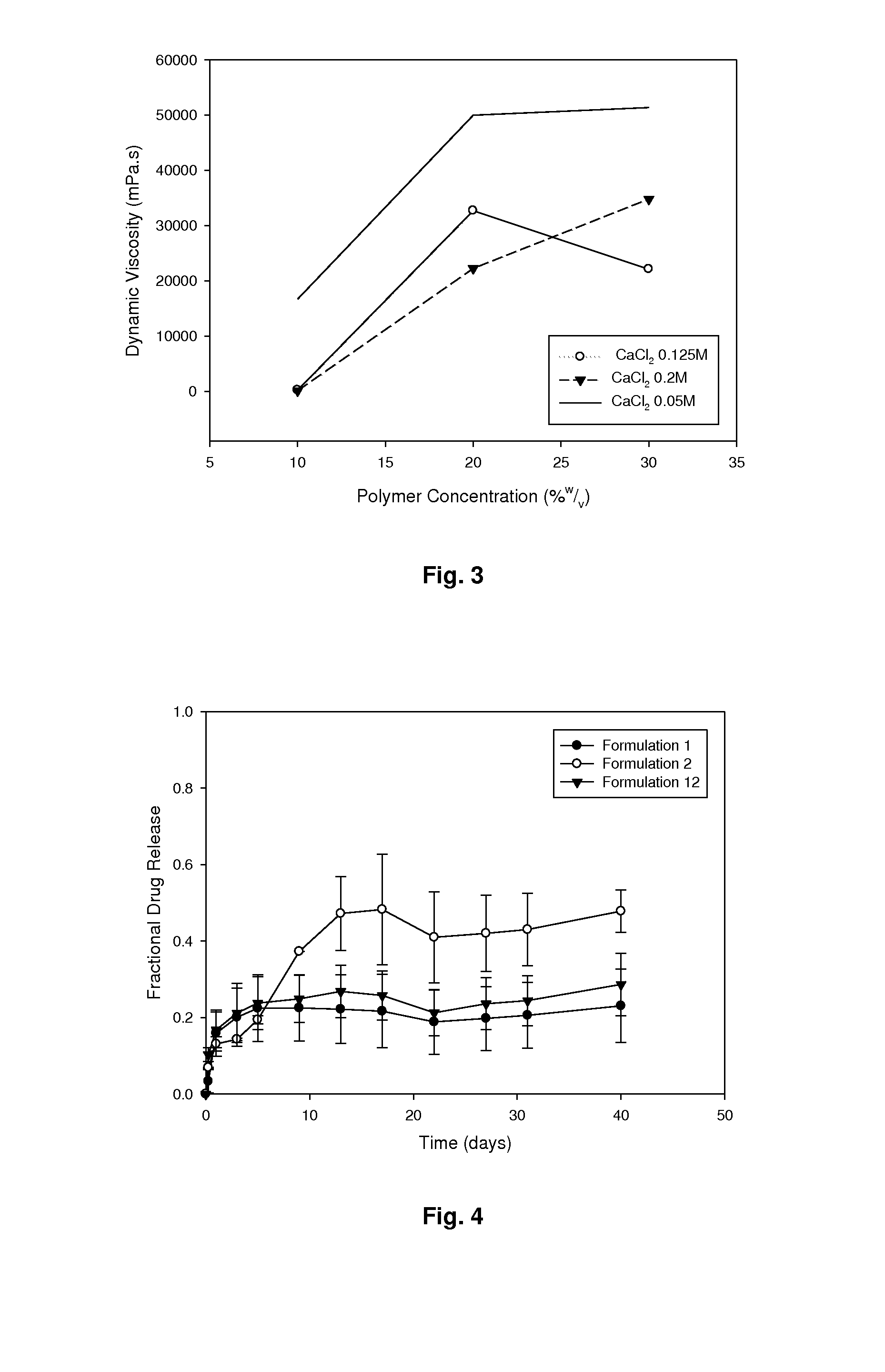Implant for the controlled release of pharmaceutically active agents
a technology of active agents and implants, applied in the field of implants, can solve the problems of toxicity of organic solvents utilised, incurred costs due to surgical procedures, and patients not having the benefit of patients
- Summary
- Abstract
- Description
- Claims
- Application Information
AI Technical Summary
Benefits of technology
Problems solved by technology
Method used
Image
Examples
examples
Materials
Thermoresponsive Polymer Solutions
[0057]Poly(methyl vinyl ether) (PMVE) (50% wt in water), folic acid and dialysis tubing (MWCO 12400 kDa, flat width 32 mm) were purchased from Sigma-Aldrich (Steinheim, Germany). Calcium chloride was purchased from Rochelle Chemicals (Johannesburg, South Africa). All other substances were of analytical grade and all solutions were prepared using Milli-Q grade water.
Microparticles
[0058]Chitosan (medium molecular weight) (CHT), acetic acid, sodium hydroxide and folic acid were purchased from Sigma Aldrich. Poly(methacrylic acid-co-methyl methacrylate) (PMMA) Eudragit S100® was purchased from Rohm, Germany. All other chemicals were of reagent grade and were used without further purification.
Design and Preparation of Thermoresponsive Polymer Compositions
[0059]A two-factor face-centred experimental formulation design was utilised to prepare 15 formulations containing varying amounts of polymer and salt as shown in Table 1. A 30% PMVE formulation...
PUM
| Property | Measurement | Unit |
|---|---|---|
| Fraction | aaaaa | aaaaa |
| Fraction | aaaaa | aaaaa |
| Fraction | aaaaa | aaaaa |
Abstract
Description
Claims
Application Information
 Login to View More
Login to View More - R&D
- Intellectual Property
- Life Sciences
- Materials
- Tech Scout
- Unparalleled Data Quality
- Higher Quality Content
- 60% Fewer Hallucinations
Browse by: Latest US Patents, China's latest patents, Technical Efficacy Thesaurus, Application Domain, Technology Topic, Popular Technical Reports.
© 2025 PatSnap. All rights reserved.Legal|Privacy policy|Modern Slavery Act Transparency Statement|Sitemap|About US| Contact US: help@patsnap.com



